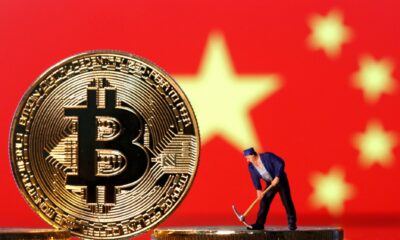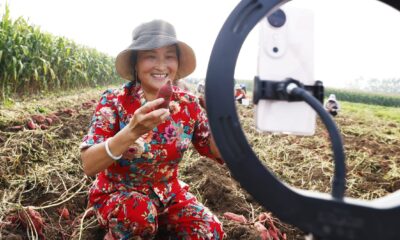Trade
ASEAN’s coercion complacency

The European Parliament passed the Anti-Coercion Instrument (ACI) to investigate and respond to economic coercion, leading to the launch of the Coordination Platform on Economic Coercion (CPEC) by G7 member states. Southeast Asian states should proactively protect their economies against potential economic pressure from China. They can engage in ‘defensive’ economic policy, build institutions to identify economic coercion, and work towards multilateral measures to protect against economic coercion. ASEAN states remain split on the issue due to conflicting relationships with China.
The Anti-Coercion Instrument (ACI) and Its Implications
Passed by the European Parliament in October 2023, the Anti-Coercion Instrument (ACI) aims to address economic coercion with the power to investigate potential instances of coercion and seek reparations or implement countermeasures if necessary. The parliament must resolve coercion through diplomatic means before deciding on further action.
The Coordination Platform on Economic Coercion (CPEC)
At the 2023 G7 Hiroshima Summit, member states launched the Coordination Platform on Economic Coercion (CPEC) to share information and issue early warnings about economic coercion threats. This mechanism will enable proactive steps to counteract economic coercion.
Economic Coercion in Southeast Asia
While Western policymakers have been addressing the issue of economic coercion, Southeast Asian states have received less attention. However, Southeast Asian states should not be complacent given their vulnerability to economic pressure, especially from China, as seen in Vietnam’s lobster export restrictions and other politically-driven sanctions in the region. Southeast Asian states should take proactive measures to protect their economies against economic coercion, as relying solely on multilateral efforts may not suffice due to internal divisions and differing attitudes towards China.
Source : ASEAN’s coercion complacency
Trade
Self-Reliance and Openness: Core Principles of China’s Third Plenary Session

The Third Plenum communique from the CCP indicates a prioritization of stability and compromise in response to China’s economic challenges. It highlights the concept of Chinese-style modernization and establishes political guidelines for balancing regulation and market forces.
The CCP’s Third Plenum communique signals a focus on stability and compromise in the face of China’s economic challenges. It emphasises Chinese-style modernisation and sets political directions for balancing regulation and market forces. While not as groundbreaking as previous plenums, it acknowledges the importance of market mechanisms and technological self-reliance, aiming to address issues like high youth unemployment and private sector uncertainty. The communique seeks to navigate the complexities of global competition and domestic innovation, potentially reshaping global supply chains and trade dynamics. Overall, it presents a pragmatic blueprint for China’s economic future.
Source : Self-reliance and openness central pillars of China’s Third Plenum | East Asia Forum
Trade
Trade Prevails Over Political Persuasions in China-Germany Relations

China and Germany maintain a strong bilateral relationship, rooted in economic cooperation despite ideological differences. Recent visits and agreements focus on expanding trade and addressing mutual concerns, navigating challenges while nurturing ties.
Evolving Bilateral Ties
China and Germany share a strong bilateral relationship, rooted in history since 1972. This connection has seen moments of cooperation intertwined with periods of tension. German Chancellor Olaf Scholz’s April 2024 visit underscores Germany’s commitment to fostering this partnership, reflecting a mutual interest in maintaining economic ties despite ideological differences.
Economic Pragmatism
As the second and third largest global economies, China and Germany’s economic interdependence is crucial. Germany emerged as China’s primary trading partner in 2023, with trade values reaching €254.4 billion (US$280 billion). In response to global scrutiny, Germany has taken a balanced approach, emphasizing economic stability over political discord. This was evident during Scholz’s prior visit in November 2022, where his diplomatic tone contrasted with broader EU sentiments.
Facing Challenges Together
Despite increasing public skepticism in Germany regarding China’s global influence and human rights issues, both nations continue to seek common ground. Their October 2023 Joint Statement highlights intentions to pursue cooperation in areas like carbon neutrality and open markets. To navigate these complex terrains, Germany can utilize its institutional frameworks to enhance dialogue, while also considering supply chain diversification to reduce dependency on China. The intertwining nature of their economies suggests that, despite challenges, both countries will continue to prioritize their substantial trade relations.
Source : Trade trumps political persuasions in China–Germany relations
Trade
Fixing fragmentation in the settlement of international trade disputes

Fragmentation in global trade due to the lack of development in multilateral trade rules at the WTO has led to an increase in FTAs. The Appellate Body impasse has further exacerbated fragmentation, requiring a multilateral approach for reform.
Fragmentation in Global Trade
Fragmentation in global trade is not new. With the slow development of multilateral trade rules at the World Trade Organization (WTO), governments have turned to free trade agreements (FTAs). As of 2023, almost 600 bilateral and regional trade agreements have been notified to the WTO, leading to growing fragmentation in trade rules, business activities, and international relations. But until recently, trade dispute settlements have predominantly remained within the WTO.
Challenges with WTO Dispute Settlement
The demise of the Appellate Body increased fragmentation in both the interpretation and enforcement of trade law. A small number of WTO Members created the Multi-Party Interim Appeal Arbitration Arrangement (MPIA) as a temporary solution, but in its current form, it cannot properly address fragmentation. Since its creation in 2020, the MPIA has only attracted 26 parties, and its rulings have not been consistent with previous decisions made by the Appellate Body, rendering WTO case law increasingly fragmented.
The Path Forward for Global Trade
Maintaining the integrity and predictability of the global trading system while reducing fragmentation requires restoring the WTO’s authority. At the 12th WTO Ministerial Conference in 2022, governments agreed to re-establish a functional dispute settlement system by 2024. Reaching a consensus will be difficult, and negotiations will take time. A critical mass-based, open plurilateral approach provides a viable alternative way to reform the appellate mechanism, as WTO Members are committed to reforming the dispute settlement system.
Source : Fixing fragmentation in the settlement of international trade disputes






